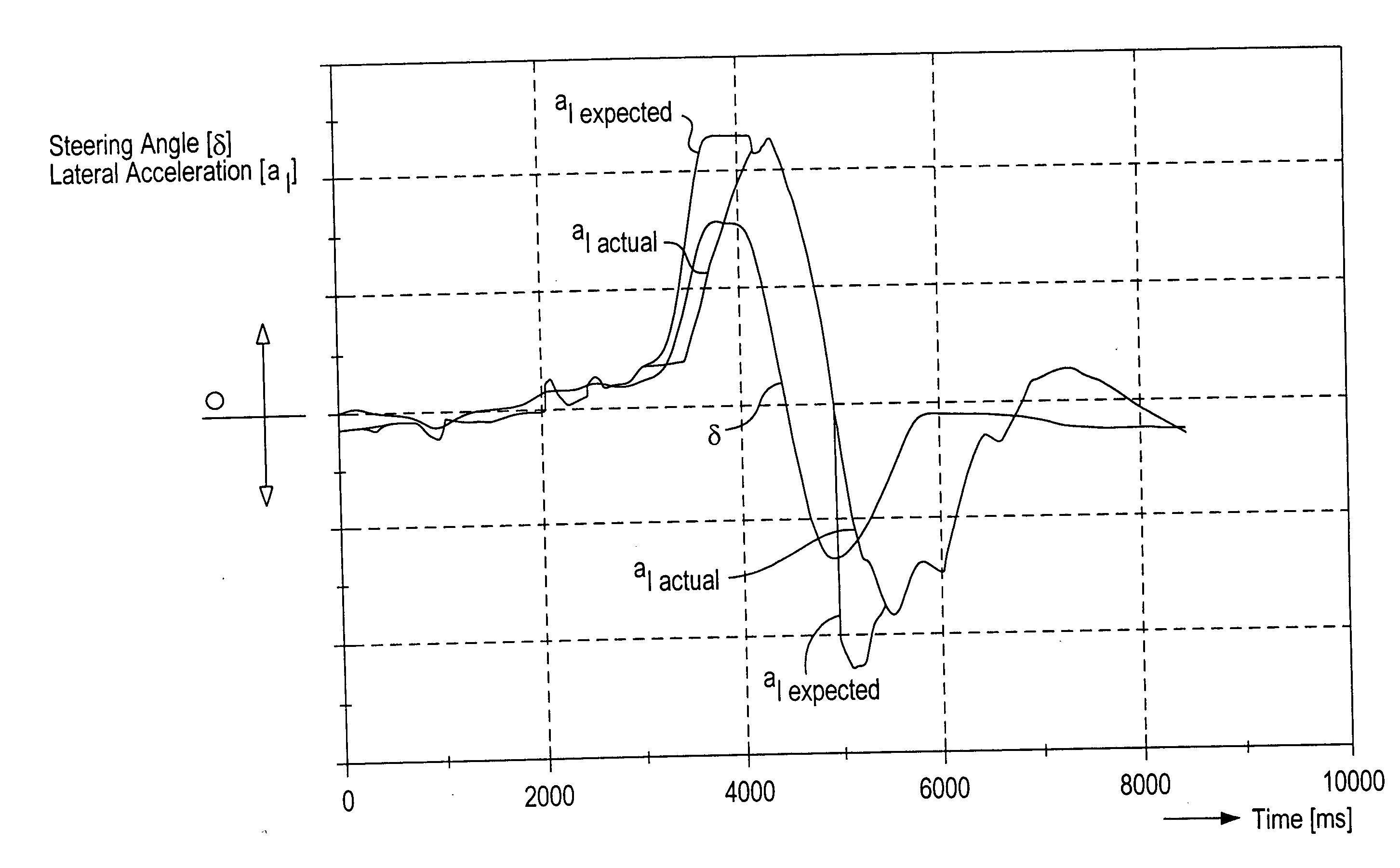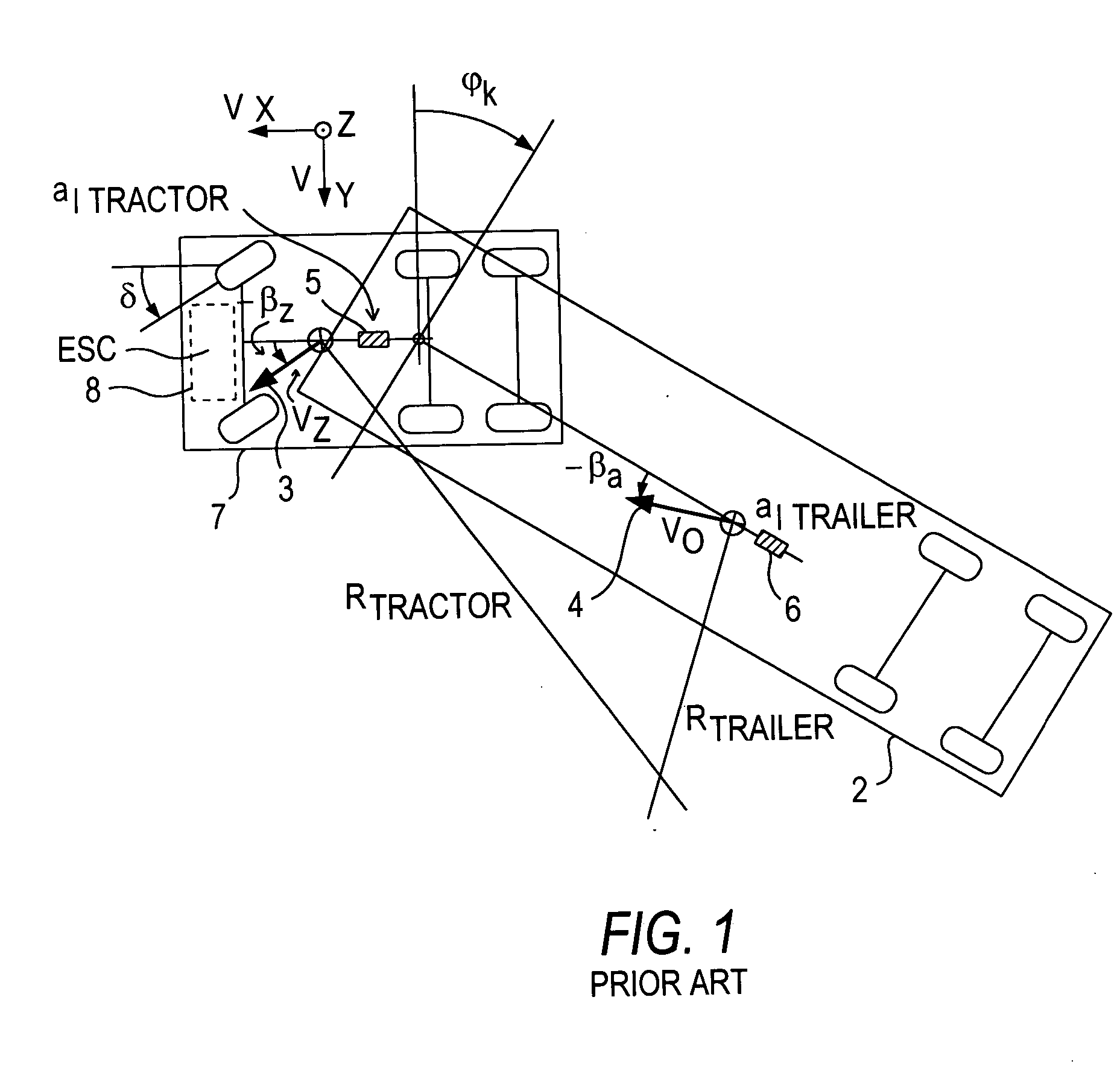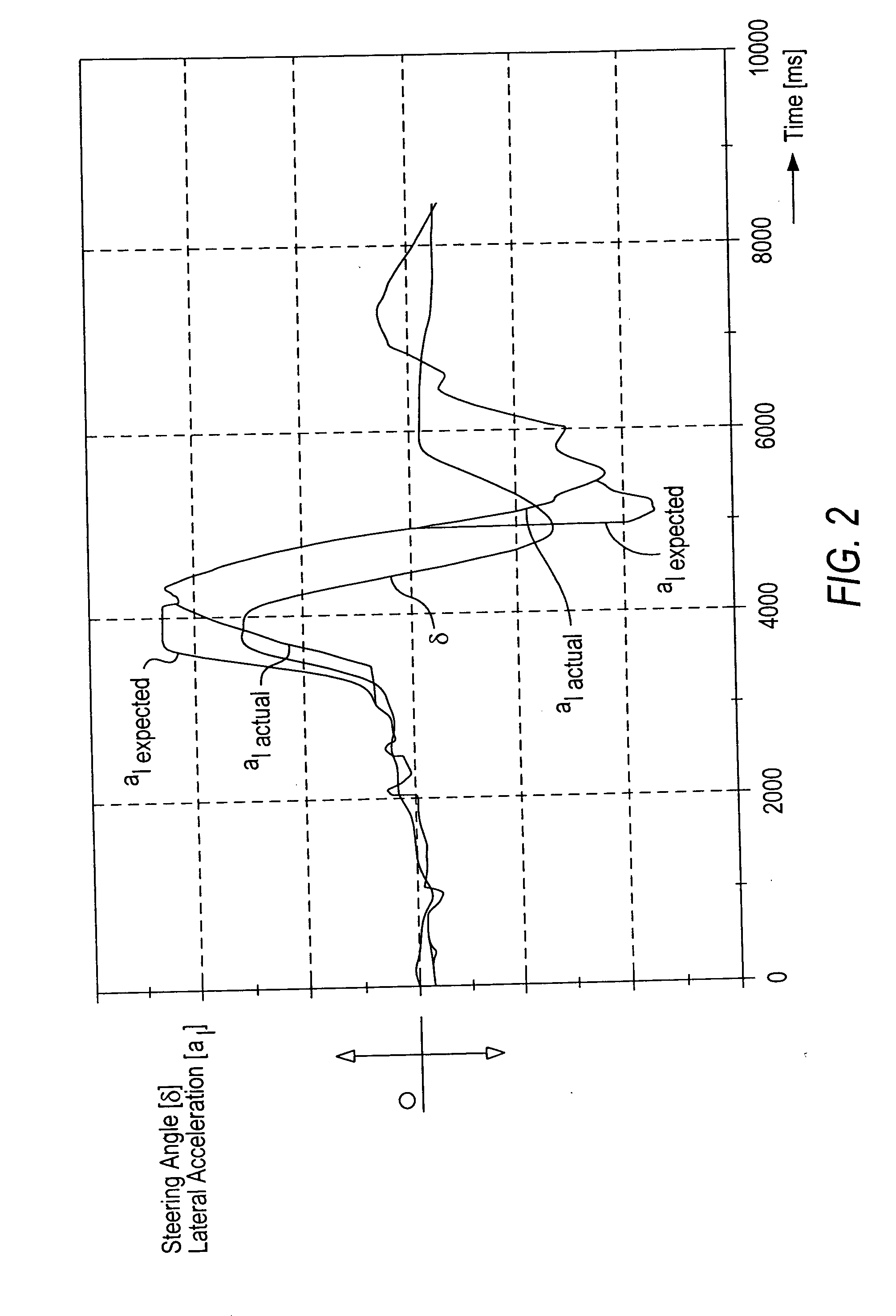Method and system for predicting lateral acceleration of a vehicle
a technology of lateral acceleration and vehicle, applied in the direction of brake systems, process and machine control, instruments, etc., can solve the problems of rsc function only having limited time to slow the vehicle's speed, and the lateral acceleration sufficient to create a vehicle rollover danger can develop very quickly
- Summary
- Abstract
- Description
- Claims
- Application Information
AI Technical Summary
Benefits of technology
Problems solved by technology
Method used
Image
Examples
Embodiment Construction
[0020] Referring now to the drawing figures, FIG. 1 is an overhead view of an articulated train negotiating a left-hand curve. The vehicle tractor is denoted by reference number 1, and the semitrailer by reference number 2. The center of gravity of tractor 1 is moving with a speed vz in the direction of arrow 3. The center of gravity of semitrailer 2 is moving with a speed va in the direction of arrow 4.
[0021] Arrows 3, 4 extend from the center of gravity of the tractor 1 and semitrailer 2, respectively, and do not coincide with the longitudinal axes of the two vehicle train parts. It follows from this alignment that the vehicle as illustrated is negotiating a curve.
[0022] The side-slip angle of tractor 1, or in other words the deviation of its actual direction of movement from its longitudinal axis, is −βz. The corresponding slide-slip angle of the semitrailer is −βa. Here, the minus signs indicate that the vehicle is negotiating a left-hand curve.
[0023] The steering angle of th...
PUM
 Login to View More
Login to View More Abstract
Description
Claims
Application Information
 Login to View More
Login to View More - R&D
- Intellectual Property
- Life Sciences
- Materials
- Tech Scout
- Unparalleled Data Quality
- Higher Quality Content
- 60% Fewer Hallucinations
Browse by: Latest US Patents, China's latest patents, Technical Efficacy Thesaurus, Application Domain, Technology Topic, Popular Technical Reports.
© 2025 PatSnap. All rights reserved.Legal|Privacy policy|Modern Slavery Act Transparency Statement|Sitemap|About US| Contact US: help@patsnap.com



